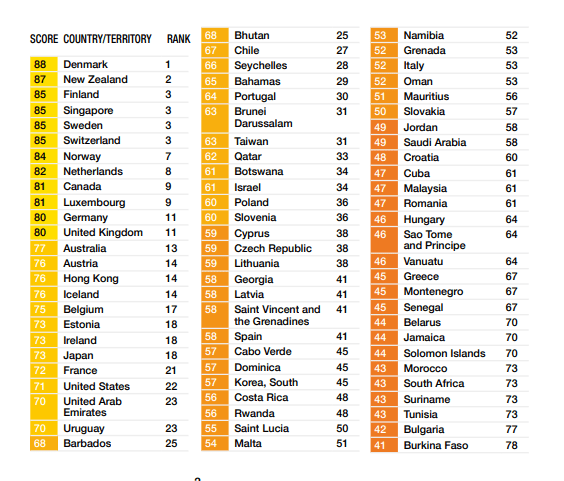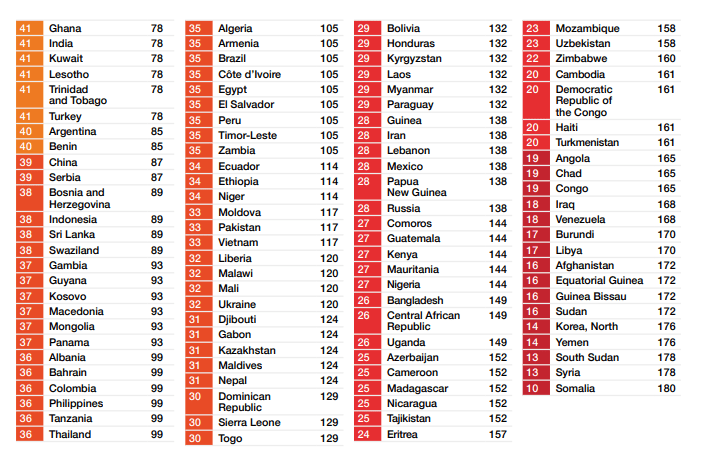- According to the Corruption Perception Index 2018, released by the Transparency Internal, India had improved a point and rose three positions.
- India marginally improve its score to 41 (from 40 in 2017), and its position to 78 out of 180 countries in 2018 against 2017’s 81st, where it had slid from 79 in 2016.
- The index says that massive public mobilisation against corruption and voter turnout resulted in new governments and anti-corruption reforms in India, Malaysia, the Maldives, and Pakistan. Despite these encouraging developments, we are yet to see how they translate into solid action, especially when it comes to combatting elusive forms of grand corruption.
- With 88 score Denmark tops the index followed by New Zealand, Finland and Singapore. Somalia, Syria and South Sudan remained at the bottom, with scores of 10, 13 and 13.
- The results paint a sadly familiar picture: more than two-thirds of countries score below 50, while the average score is just 43. Perhaps most disturbing is that the vast majority of countries assessed have made little to no progress. Only 20 have made significant progress in recent years.
- The 2018 CPI draws on 13 surveys and expert assessments to measure public sector corruption in 180 countries and territories, giving each a score from zero (highly corrupt) to 100 (very clean)
- The index, which ranks 180 countries and territories by their perceived levels of public sector corruption according to experts and business people, uses a scale of 0 to 100, where 0 is highly corrupt and 100 is very clean. More than two-thirds of countries score below 50 on this year’s CPI, with an average score of just 43.
- Since its inception in 1995, the Corruption Perceptions Index, Transparency International’s flagship research product, has become the leading global indicator of public sector corruption. The index offers an annual snapshot of the relative degree of corruption by ranking countries and territories from all over the globe. In 2012, Transparency International revised the methodology used to construct the index to allow for comparison of scores from one year to the next. .
- It reveals that the continued failure of most countries to significantly control corruption is contributing to a crisis in democracy around the world. While there are exceptions, the data shows that despite some progress, most countries are failing to make serious inroads against corruption.




